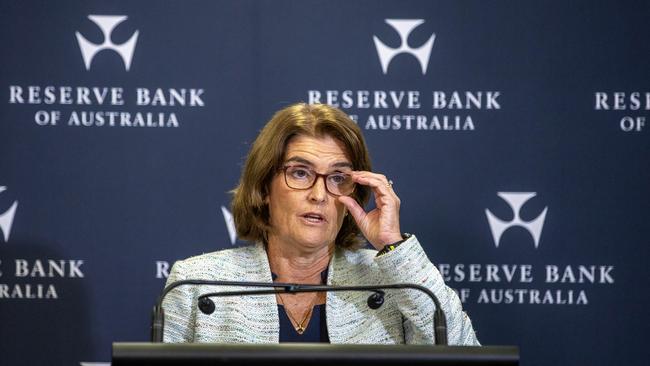Don’t lose hope for rates relief this year despite RBA’s caution, economists say
The Reserve Bank will deliver multiple interest rate hikes in the second half of this year, analysts say, despite governor Michele Bullock downplaying the prospect of mortgage relief.

The Reserve Bank will deliver multiple interest rate cuts in the second half of this year, economists and investors believe, despite governor Michele Bullock downplaying the prospect of mortgage relief following the first board meeting of the year on Tuesday.
As expected, the RBA board held the cash rate at 4.35 per cent but made it clear that the battle to bring inflation back under control was far from over, saying consumer price growth remained too high and that “a further increase in interest rates cannot be ruled out”.
Ms Bullock’s comments at the post-meeting press conference – the first of its kind – alongside the board’s statement were seen as an attempt to temper growing ebullience about rates relief in the wake of the most aggressive series of increases in a generation.
But as households’ mortgage burdens continue to grow and spending contracts, analysts at banks such as CBA, AMP and Barclays still predict three rate cuts before the end of the year, with a number of other financial market economists pencilling in two.
The steadfast view among analysts that a reduction in borrowing costs will be forthcoming in 2024 came as a measure of inflation which includes interest payments dropped from 9 per cent in the year to September for the typical employee household, to a still elevated 6.9 per cent.
With the pace of rate rises slowing to just one in the final quarter of last year, the true cost-of-living inflation for working families with mortgages remains far higher than the headline pace of 4.1 per cent, the Australian Bureau of Statistics’ cost-of-living index revealed.
Mortgage interest charges were up 40 per cent in the year to December, down from a peak of over 90 per cent in the 12 months to June, the ABS data showed.
ABS head of prices statistics Michelle Marquardt said “while the Reserve Bank of Australia has implemented fewer cash rate increases in recent months, previous interest rate increases and the rollover of some expired fixed-rate to higher-rate variable mortgages continued to contribute to rises”.
Westpac chief economist Luci Ellis said Ms Bullock and her board had emphasised the persistent inflation challenge in order to “avoid markets getting ahead of themselves and pricing in a cut too soon”.
Dr Ellis said there was a similar pattern overseas. “The Fed (US Federal Reserve) is pushing against market pricing for a March cut, but is probably going to go mid-year. The (European Central Bank) is pushing against cuts in the first half of this year and saying it will be in the summer,” she said.
“The main difference is that the RBA is still not ruling out a hike, everyone else more or less has. And they are pushing against May or June (timing for a rate cut), but will probably go in September.
“We think they will do two cuts this year and then wait and see.”
Challenger chief economist Jonathan Kearns said there was the potential for interest rates across a number of markets to start falling in advance of an official RBA decision if an imminent rate cut was seen as a sure thing.
“They (the RBA) still think there’s a potential chance they have to increase rates, and they won’t want the market and the community to be certain that there’s a rate cut coming if they then have to reverse course,” said Dr Kearns, who remains unconvinced that rates will move lower this year.
“That would be bad from a reputation perspective, especially given recent history,” he said, referring to the former governor’s flawed guidance that rates would stay at virtually zero for years, only to deliver a string of hikes after inflation took off in early 2022.
As investors, analysts and households try to gauge the timing of a first rate cut, Ms Bullock on Tuesday suggested the board would not necessarily wait until inflation was at 3 per cent or below before acting.
“Would we need to wait for it (inflation) to be in the (2-3 per cent) range? I think that’s a question that remains to be seen,” the RBA governor said.
“And if we’re getting there and we look to be on track to get sustainably in the band, then we might be able to think about interest rate cuts, but we’ve got to be confident about that.”
However, Dr Ellis said: “You shouldn’t be waiting until you’re actually in the target band before you take out the restrictive policy – you would be over-tightening, because policy works with a lag.
“They will wait until they have comfort and reassurance it is going into the band,” she added.




To join the conversation, please log in. Don't have an account? Register
Join the conversation, you are commenting as Logout